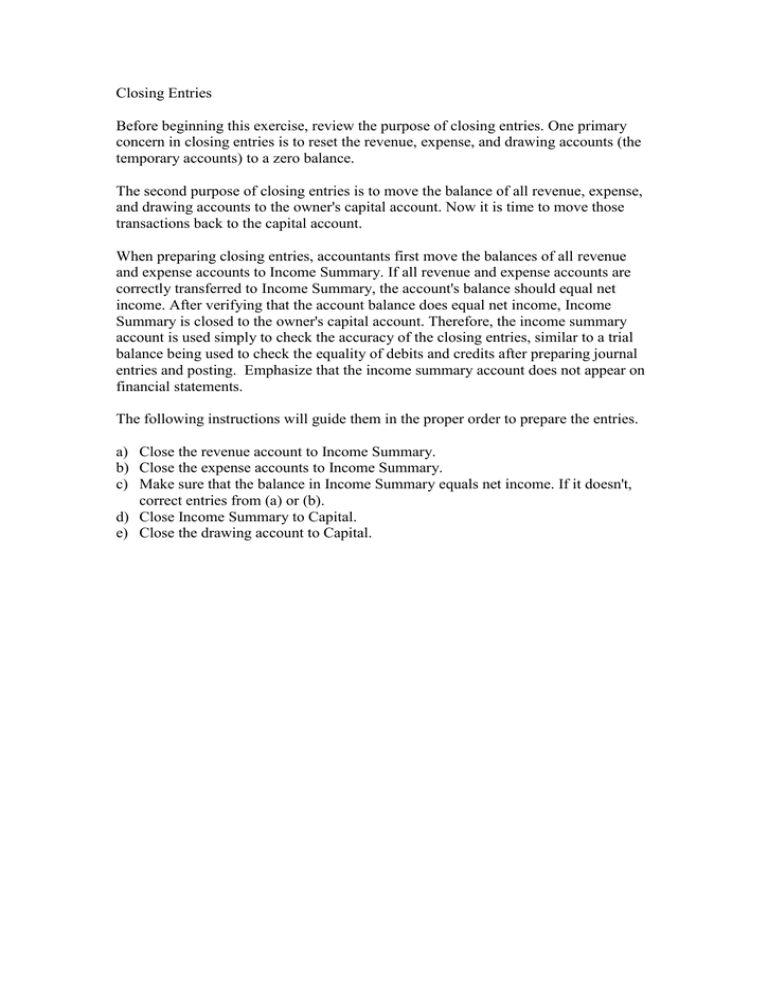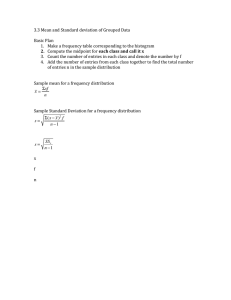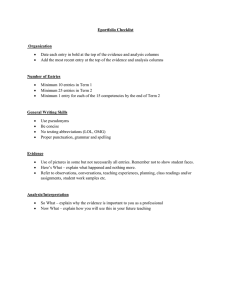Closing Entries
advertisement

Closing Entries Before beginning this exercise, review the purpose of closing entries. One primary concern in closing entries is to reset the revenue, expense, and drawing accounts (the temporary accounts) to a zero balance. The second purpose of closing entries is to move the balance of all revenue, expense, and drawing accounts to the owner's capital account. Now it is time to move those transactions back to the capital account. When preparing closing entries, accountants first move the balances of all revenue and expense accounts to Income Summary. If all revenue and expense accounts are correctly transferred to Income Summary, the account's balance should equal net income. After verifying that the account balance does equal net income, Income Summary is closed to the owner's capital account. Therefore, the income summary account is used simply to check the accuracy of the closing entries, similar to a trial balance being used to check the equality of debits and credits after preparing journal entries and posting. Emphasize that the income summary account does not appear on financial statements. The following instructions will guide them in the proper order to prepare the entries. a) Close the revenue account to Income Summary. b) Close the expense accounts to Income Summary. c) Make sure that the balance in Income Summary equals net income. If it doesn't, correct entries from (a) or (b). d) Close Income Summary to Capital. e) Close the drawing account to Capital.


